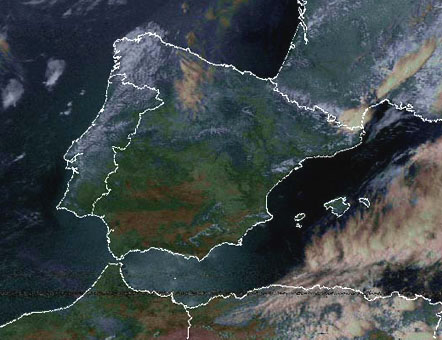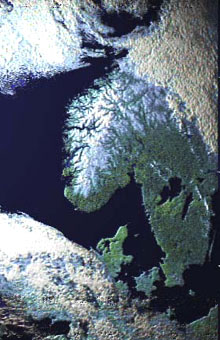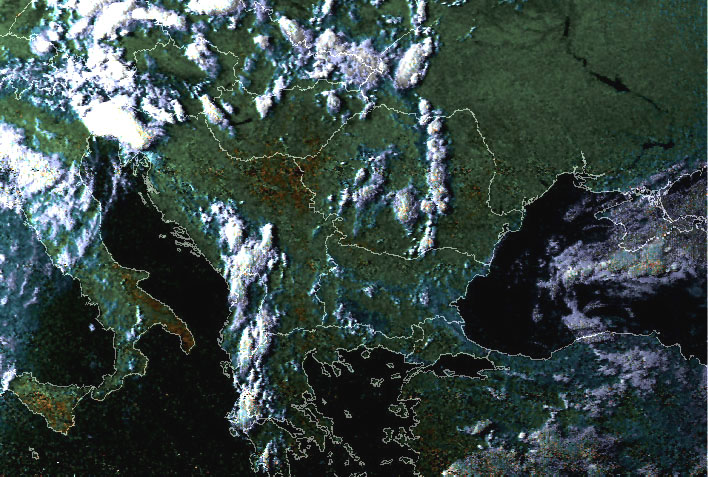Polar Orbiting Weather Satellite Images |
|
|---|---|
Amateur reception of weather satellites images is another facet of the space-related activities at EA4LE / KC2HAX. Most of the work to date has being focused on the reception of APT (Automatic Picture Transmission) from the US TIROS / NOAA polar orbiting satellites and the European Meteosat geostationary satellites. |
|


NOAA-14 satellite, APT Images. Iberian peninsula (left) and Southern Scandinavia (right)
The NOAA satellites images are transmitted in the digital HRPT format (High Resolution Picture Transmission) at 1.7 GHz and in the analogue APT mode on 137 MHz. The images shown in this page are analogue APT pictures, in this mode two of the 5 spectral channels of the satellite radiometer are selected, reduced in resolution and transmitted time-multiplexed in the time channels A and B. This images were produce combining the received signals from channel A and B, during daylight passes. The brightness is controlled by the primary information channel (in this case the NOAA VIS -visual- channel), the color hue is set by the secondary information channel ( the NOAA IR -infrared- channel). The software used for image decoding is WXSat 2.5 developed by Christian H. Bock. The overlays with the country and continental boundaries were produced with Tracker 1.0 by Oded Regev, 4Z5BS. Suggestion, take your atlas and try to identify all the geographic features in the images, you will be surprises by the resolution of the APT "low res" mode, there is a lot you can see.

NOAA-14 Satellite, APT Picture, South Eastern Europe
Pictures were
received with very modest receiving equipment at EA4LE in Las Rozas, Madrid. Scandinavia
and Ukraine/Asian Turkey are the North and East limits of the Satellite footprint at the
Madrid location. Antenna used was quadrifilar helix; a careful examination of the pictures
will reveal some noise consistent with a notch in the antenna radiation lobe. The heart of
the WX Satellite Receiving system is a slightly modified Radio-Shack PRO-23 Scanner. To improve the quality of the
signal for demodulation, baseband
audio is directly taken from the FM discriminator chip. The images were captured with the
standard IF bandwidth. Some modifications were made to widen the IF bandwidth, but the
signal to noise ratio deterioration made then worthless. The same equipment is used as a
137MHz receiver and as an IF receiver for 1.6 GHz.
Copyright 2001 Antonio Fern�ndez